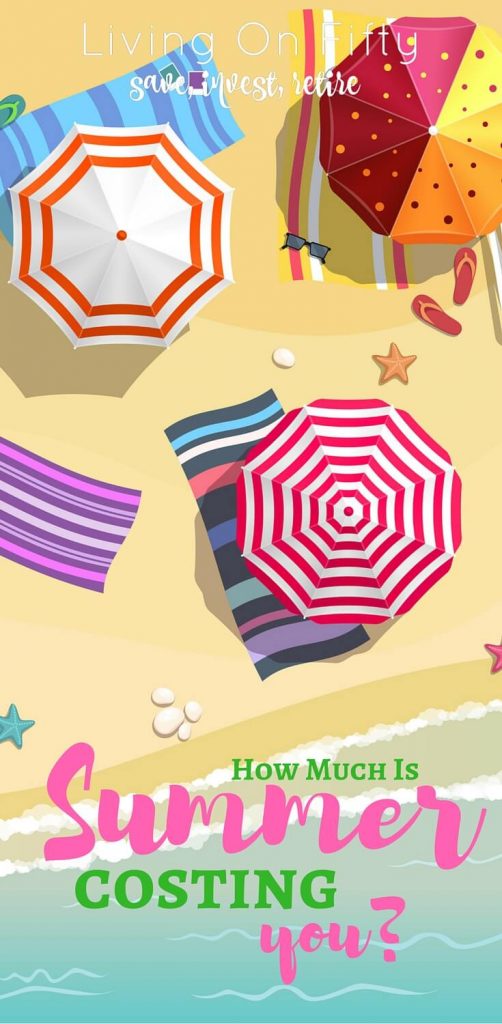Last week, the New York Times ran an interesting article called The Families That Can’t Afford Summer, and it really struck a chord with me.
The article start with a story, one that I’ve only though about in the back of my mind, hoping that by the time I have to deal with it, I’ll have a good solution. From the NYT Article:
“Tolanda Barnette is hoping for “a miracle” for her 6-year-old son: The 41-year-old daycare worker can’t afford to enroll him at the center where she works, and she’s just saved enough to move her family out the shelter where they’ve been living the past year into an apartment in Durham, N.C. There’s no money for even the least expensive camp.
Her only option is to leave the boy at home with his 12-year-old sister. “My daughter’s not going to be happy,” Ms. Barnette said. “She doesn’t want to spend her summer babysitting.” Her daughter is also scheduled to stay with her father for part of the summer, and opportunity Ms. Barnette’s 6-year-old doesn’t have. “I’m really digging for something for him,” she said. But if she fails? “I don’t know. I just don’t know. I have to work. It’s not an option.””
In a society that no longer expects one parent to stay home with the children, how are we expected to cope with a school system that hasn’t kept up with the times?
Summer is a necessary break for children – science backs up their need to play to expand their minds, and keeping the pressure off of them is necessary too, especially with all the testing in schools today.
But as adults, we’re not afforded such a break from our careers (with the exception of teachers and a few other professionals), and if you’re not a family with a stay-at-home mom or dad, summer poses unique challenges.

For those families who can afford it, summer means and endless string of summer camps, babysitters, and fun activities in the sun. But single parents and couples who can’t afford expensive summer programs are stuck between a rock and a hard place.
Ms. Barnette’s story really struck a chord with me, as a friend to moms with this problem, as well as a mom who may someday deal with this. I am, after all a working mom whose child is going to head to school in the next couple of years. And even though I’m a work from home mom, I still have a babysitter since I need to be child-free during working hours to actually get my work done.
But you know what really struck me? No one talks about it!
Friends or family, I’ve never heard a single word about the struggles of summer, financially or otherwise, which is why this article really hit home.
Money is traditionally quite a taboo topic. You don’t bring it up at a restaurant, around the dinner table, or at church. You don’t ask questions, and you don’t ever publicize financial details about your life in our social circles, as well as many others, probably even yours.
But the reality is that, whether we talk about it or not, we ALL have money struggles. I don’t care how much money you make, how awesome you are at budgeting, or how solidly responsible your financial decisions are, you – and everyone around you – have financial struggles.
And no one is allowed to talk about them.
To me, it seems like problems, especially those that many families have like the summer problem, should be talked about.
In depth.
Because more minds are better, right?
The Drastic Cost Difference
Obviously, daycares abound no matter where you live, but at what expense??
Assuming that the center has openings just for the summer, daycare costs average $188 per week for 1 child, a typical 11-week summer vacation will run parents $2,068, well over the cost of a typical public school.
And that’s if you only have 1 child. 2 or more children will obviously add more expense to the summer problem.
By contrast, the least expensive summer camps (usually through the YMCA or local governments) run parents around $178…and those camps are usually filled mere hours after registration opens.
More realistically, camps that are equal parts educational/fun/safe can cost anywhere form $300 – 900/week, a significant bump and a sure strain on the wallet.
A Few Possible Solutions
With summer posing a huge financial problem for families, a few obvious solutions present themselves
Neighbors
If you have neighbors who stay home with their children, don’t work during the summer, or even high school students looking to make some extra money could bridge the summer gap. Of course, you’ll actually have to get to know your neighbors for this to work.
Teachers
Do you know any teachers among your friends, family, church, or neighborhood? These professional present an obviously solution for childcare, as they will uniquely understand the situation summer break presents.
Grandparents
And of course, what grandparents (or aunts, uncles, etc) wouldn’t want to spend some time with their grandkids during the summer? I know mine would!
When All Else Fails…
I just gave you a few possible solutions, but even in the best of circumstances those may not be possible. Family may not live close, neighbors may not present a viable option, and you may not have any teacher acquaintances. It happens.
In the case of Ms. Barnette, with her 12-year-old, 12-year-old, I would like to provide an alternate solution: a career change.
The average salary of a daycare worker in North Carolina is $18,840, not much for a single person, much less a mom of 2. Add in the summer financial challenges, and even to someone like me who loves living frugally, this seems VERY challenging.
I think it is very feasible that Ms. Barnette could start to embrace the concept of a side hustle for about 6 months, and in that time ramp up her business enough to completely cover her salary at the daycare center where she works, completely eliminate the before and after-school child care costs, as well as completely eliminate an expensive summerk!
As a bonus, she would also be able to work whenever she can, or whenever her children’s schedules dictate she can (like while they’re in school). Finally, she would almost definitely be able to cut back on the cost of her commute, since she would be working from home.
Don’t believe me?
Here are a few of my favorite ideas:
- Blogging: I made more than $33,000 blogging on the side in 2015.
- Make a Living on eBay: Sarah Titus did this for years, is an inspiration to single and married mothers everywhere, and has a free eBay Training course.
- Small Business: Alexa Mason of SingleMomsIncome.com has a great resource with 10 small business ideas for women.
Or, if you just need to make a little extra money on the side, check out these great ideas:
- Make $1,200 a year with this cool idea
- Get rewarded for stuff you already do with this website
- Make Money Off The Mundane
- 7 Ways To Make $100/Week This Summer
There are literally hundreds of ideas online designed specifically to help parents stay home with their children, drastically cut their living expenses, and still bring home a full time income. These ideas are scams, sales businesses, and most don’t even require money to get started (such as inventory).
I collect these ideas and more on my Making Money board where there is literally something for everyone, including Ms. Barnette.
A few challenges:
Now, proposing a career change for Ms. Barnette isn’t without it’s challenges, but they have solutions.
Time Constraints: Starting a side hustle with the intention of eventually turning it into a full-time income is hard when you’re working full-time. There’s no sugar-coating it. When I started side hustling, it was very challenging to either watch my daughter while trying to work, or parking her in front of the TV while I worked. Not the greatest solution, but I had to remind myself that sacrificing this time would be entirely worth it when I reached my goals. Ms. Barnette would most definitely have to sacrifice time, but 6 months of hard works could yield some amazing results.
Health Insurance: The life of a freelancer or business owner would not be easy for Ms. Barnette when it came to health insurance. Right now, she probably qualifies for subsidized health insurance, and while her business ramps up, she would still continue to qualify. Luckily, there are cost-share associations as well as the government healthcare marketplace to help out with health insurance costs.
Income Fluctuations: Not knowing exactly how much money is a definite frustration for many freelancers. However, if this was a concern for Ms. Barnette, she could choose to work from home for a company that requires a minimum number of hours each week, and she would receive regular paychecks. Problems solved.
Now, Ms. Barnette is a real person, but the reason that this really hit home for me was that I feel like so many people, because we don’t talk about it, don’t know just how many options are out there that can drastically cut your costs, save you tons of time and stress, and still keep the bills paid!
I know that at least one person reading this is stuck in a stiuation like Ms. Barnette.
And I don’t want you to be!
I want you to know that you have SO MANY options. No matter what you skill set, education level, hours of availability or any other extenuating circumstances, you can always make a change to make your life better.
It might cost you some time with your family up front.
It might start out frustrating.
But the end result, with the summer problem solved, a schedule that works for you, and a happy family, is completely, totally, worth it.

This post may contain affiliate links. See my disclosures for more information.














I’ve been trying so hard to get my blog to a full time status so I can work from home. I would encourage that lifestyle for anyone with kids though! I don’t have any personally, but when I do, I want to be able to stay home with them.